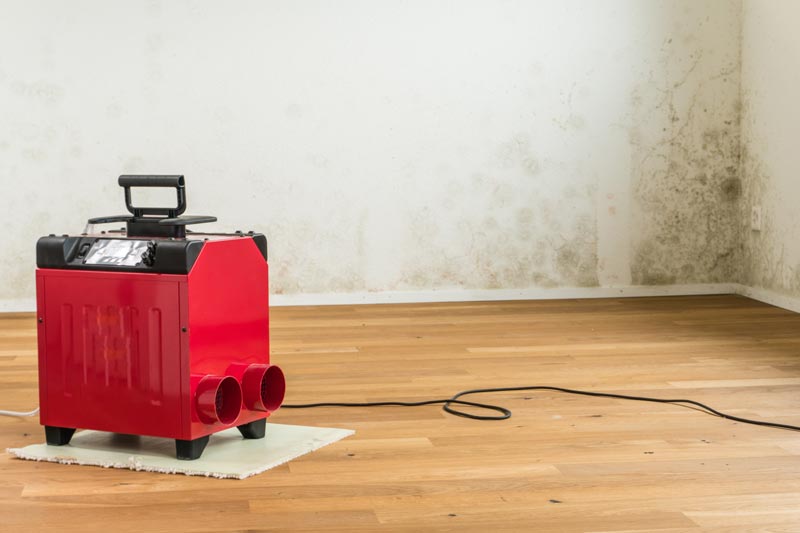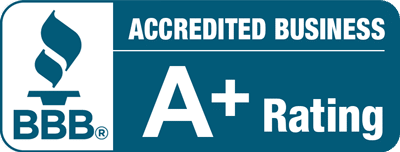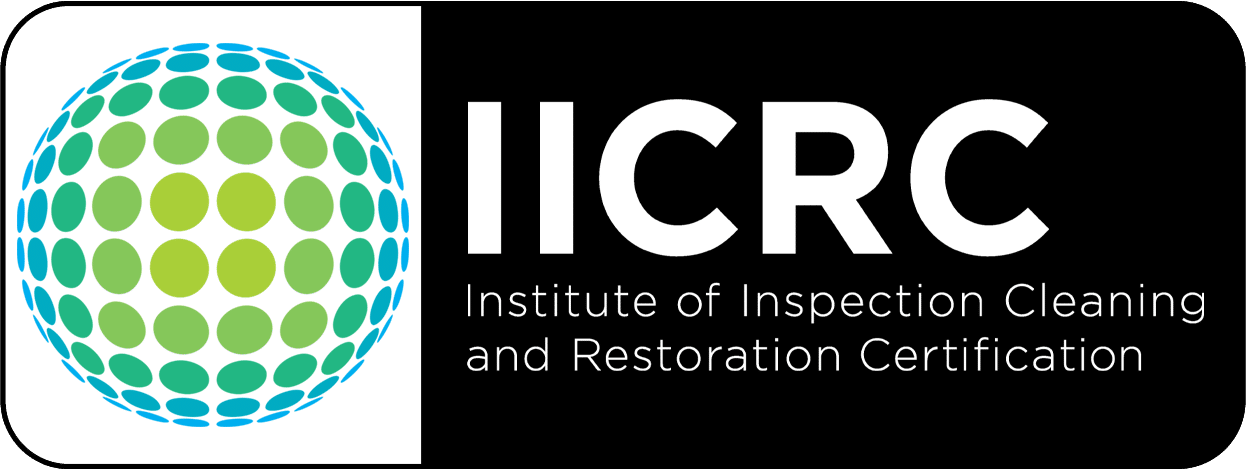Thanks to the intermingling climate zones of the Great Plains, cities like Manhattan in Kansas are susceptible to fierce, whiplash bouts of heat and humidity. If you’re a property owner, then you probably know by now that during those warm, sticky days, hotspots like attics, crawl spaces, and basements are particularly susceptible to undesirable mold growth.
As the old saying goes, “An ounce of prevention is worth a pound of cure!” Remember Lamunyon Mold for any mold dehumidification needs in the Northern Kansas area. We make sure the mold not only goes away from your home but also never comes back!

Why Are Regular Mold Inspections Necessary For Your Home?
Before we get into the importance of dehumidification and subsequent strategies, we believe it is important to highlight the value of testing. While many of us don’t think twice about regularly changing the oil in our car, we tend to neglect regular mold inspections. This happens for plenty of folks (you’re not alone), even though, compared to our property’s financials, our cars are just a small fraction of the investment! At a minimum, homes should be tested any time there is water damage or standing exposure to water for more than 24 hours.
But more regular inspections can help you stay ahead of the curve. If any mold is detected, it is more likely to be prior to the explosive, damaging growth that would necessitate larger-scale drywall or some structural removal.
How Does Mold Dehumidification Help Combat Mold Growth?
Mold is everywhere. Even in perfectly safe environments, there are mold spores in the air and on surfaces. But these spores exist in a concentration that the EPA has deemed Acceptable Level (or safe). Furthermore, without a consistent water source, these spores are non-threatening and unlikely to spread and grow. The water source is the key to mold spread.
While a burst pipe or a flooded basement may present obvious causes for concern, stealthier, less dramatic sources of water can still be tremendously problematic when left unchecked. In this way, the occasionally high humidity of central Kansas is a threat to incite long term mold damage.
Will A Dehumidifier Kill Mold?
Unfortunately, dehumidifiers do not eliminate mold. But they can help prevent mold growth by reducing the amount of available moisture in the air. As you know, mold thrives in moist environments. Dehumidifiers are designed to limit the moisture level by extracting excess water from the air, thereby reducing the relative humidity. Relative humidity is measured as a percentage. Any relative humidity level above 50% tends to be excessive for most spaces.
A well-chosen dehumidifier can help with the maintenance of ideal relative humidity levels for your space and aid in limiting swells of mold. Not to mention, dehumidifiers in general improve the air quality of interior spaces.
How To Choose The Right Dehumidifier For Your Space
Dehumidifiers come in a variety of effective sizes and strengths. Without an expensive, whole-house dehumidification infrastructure (often operating as part of your house’s HVAC system), many people rely on store-bought options that serve single rooms or even entire floors. From kitchens and bathrooms to attics and basements, selecting the right dehumidifier for at-risk areas comes down to the chosen device’s effectiveness across a given square footage. Measure your room and compare specs when shopping!
Dehumidifier capacities are scored according to how much moisture should be eliminated in a single day. Common capacities range from anywhere between 30 to 70 (or even 90) pints of water! So a 30-pint capacity dehumidifier, for instance, should remove 30 pints of water over a 24-hour period.
To provide a ballpark,
30-Pint Dehumidifiers Are Best For:
- Damp conditions across 500 – 1500 square feet
- Excessively damp conditions across 500 – 1000 square feet
- Wet conditions across 500 square feet
50-Pint Dehumidifiers Are Best For:
- Damp conditions across 2000 – 2500 square feet
- Excessively damp conditions across 1500 – 2000 square feet
- Wet conditions across 1000 – 1500 square feet
- Excessively wet conditions across 1000 square feet
70-Pint Dehumidifiers Are Best For:
- Excessively damp conditions across 2500 square feet
- Wet conditions across 2000 – 2500 square feet
- Excessively wet conditions across 1500 – 2000 square feet
Quality Ventilation Is Just As Important As Mold Dehumidification
Ventilation is another major variable in the equation. A well-ventilated room will naturally retain less moisture. Do what you can to increase ventilation in a troublesome room.
Spaces with improved airflow are less prone to moisture buildup and may not require the same intense, around-the-clock dehumidification to compensate. But in more tightly enclosed spaces with less airflow, near-constant operation may be the best option in limiting the spread of mold.
Protect Your Dehumidifier From Mold Infestation Growth
So, you have done the research and taken the steps to select a dehumidifier for mold removal in Manhattan that suits your space. You are running it on a consistent schedule. But as your dehumidifier kicks into gear to protect your air quality, are you kicking into gear to protect your dehumidifier?
As dehumidifiers remove moisture from the air, they themselves are more prone to moisture buildup. They become the “magnet,” so to speak, for moisture and mold in your home. With this in mind, it’s essential to maintain a regular cleaning schedule for your dehumidifier. Clean according to manufacturer instructions, and be sure to change air filters on time. The last thing you want is for your new dehumidifier to become the victim of mold growth!
Contact Lamunyon Mold For Mold Dehumidification In Manhattan, KS
Give us a call today to learn more about our mold dehumidification services in Manhattan, KS, or book an appointment to request a mold removal dehumidifier service. We also provide mold testing and inspection services in Manhattan, KS.
FAQ
Frequently Asked Questions
Yes. A poorly maintained dehumidifier can promote the growth of mold in parts of the house. The water in the tank of the dehumidifier requires removal and disposal frequently. Otherwise, the water tank can become a breeding ground for mold. Moreover, dehumidifiers keep humidity at low levels (below 50%), which doesn’t let the mold spread. If you don’t maintain this setting, the dehumidifier will be useless against the mold.
A dehumidifier is a mechanical device that removes humidity (water vapor) from the air and condenses the vapor into liquid water, which can then be removed from the area, typically down a drain. Some dehumidifiers come equipped with a pump to help eject water from the dehumidifier to a drain.
Cleaning the coils of a dehumidifier with an antimicrobial cleaner can help prevent mold. Here is how you can do it:
- Turn off the dehumidifier and unplug it
- Take out the air filter and wash it gently before letting it dry
- Remove the dehumidifier’s cover to see the coil
- Spray a no-rinse foaming antimicrobial on the coil
- The cleaner will drip into the water collection tank
- Wipe down the coil and its part with a soft cloth
- Take out the water collection tank and wash it
- Let the tank dry before putting it back
Repeat this process at least every three weeks to make sure your dehumidifier works best.
You should put your dehumidifier on the floor of the basement. That is because placing the dehumidifier on an elevated surface doesn’t allow it to supply air circulation properly. Therefore, always keep at ground level. Additionally, make sure your dehumidifier is not close to other materials, like wood. Place your dehumidifier on the ground at the center of your basement, away from any object.
Insurance only covers mold dehumidification in Manhattan, KS, when the source of the mold is a peril covered in your homeowner’s insurance policy. A standard homeowner’s insurance policy protects you from perils like sudden and accidental water damage, such as pipe bursts and water flow of a malfunctioning AC unit. Before you hire a mold dehumidification service in, Manhattan, KS, it’s better to ask your insurance agent if it will be covered by the policy, depending on the cause of the mold.
A mold dehumidification system costs around $1,000 to $3,000 (per dehumidification project) in Manhattan, KS, with the average cost landing around $2,000. However, various factors play into the cost of mold dehumidification, including:
- Capacity: A dehumidifier that removes 130 pints of moisture per 24 hours costs over $2,000. In contrast, a dehumidifier that removes 70-80 pints per day costs around $1,500.
- Energy Efficiency: Central dehumidification systems are more energy efficient, as opposed to portable dehumidifiers. These energy-efficient dehumidification systems range between $1,600 to $3,500.
- Installation and Parts: Central dehumidification installation is generally more expensive than installing a dehumidifier for one room. That is because central dehumidification systems use expensive parts – the cost of filters can be between $20 to $25 per filter.
- Labor: Central dehumidification system installation can take around 6-7 hours. The cost of labor ranges from $75 to $250 per hour.
To know the exact costs according to your dehumidification needs in Manhattan, KS, contact a mold dehumidification technician at Lamunyon Mold Inspection, Testing, & Remediation.


